S&P exam 3 - ch 9 , 10 , 15
1/119
There's no tags or description
Looks like no tags are added yet.
Name | Mastery | Learn | Test | Matching | Spaced |
|---|
No study sessions yet.
120 Terms
Color perception
The ability to perceive differences in color wavelengths and identify objects based on their color.
Perceptual grouping
The process of organizing and grouping features of objects based on visual cues.
Example: The result was that observers recognized the appropriately colored objects more rapidly and accurately. Thus, knowing the colors of familiar objects helps us to recognize these objects.
color also helps us recognize natural scenes and rapidly perceive the gist of scenes.
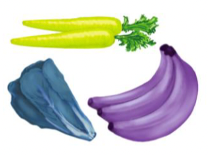
Visual cue
A signal that helps grab your attention and organize visual perception.
Familiar object recognition
The ability to recognize objects more rapidly and accurately when they are displayed in their typically associated colors.
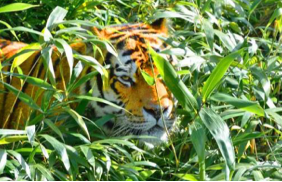
Monochromatic
Refers to animals that possess only one type of photoreceptor, allowing them to see only one color.
aquatic animals
dolphins have only one type of chrome cells
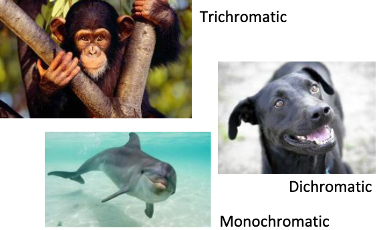
Dichromatic
Refers to animals, such as dogs and bears, that have only two types of photoreceptors for color vision.
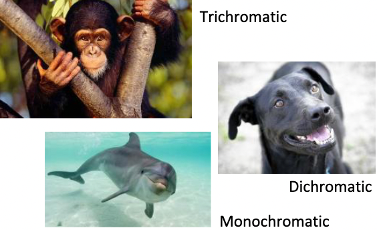
Trichromatic
Refers to species like humans and monkeys that have three types of photoreceptors for color vision.
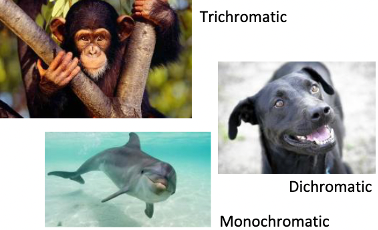
Light spectrum
The range of wavelengths of light, which corresponds to different colors perceived by the human eye.
Color is a mental response
We have evolved to respond to the color wavelengths
Starts with a light source
White light is made up of all the frequency’s at the same levels
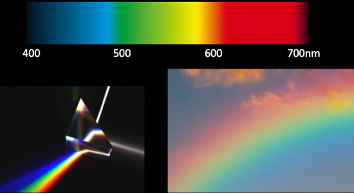
Selective reflection
The process by which objects reflect certain wavelengths of light while absorbing others.
example: All frequency’s hit the apple, the apple absorbs most of the color frequency’s and then reflects the color red and doesn’t absorb it
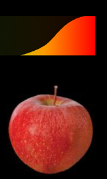
Achromatic color
Colors that do not correspond to specific hues on the light spectrum;
include white, grey, and black.
Reflectance curve is a flat line because it’s equally reflecting all the different parts and colors from the light spectrum
More or less dependent on how dark or light the grey is
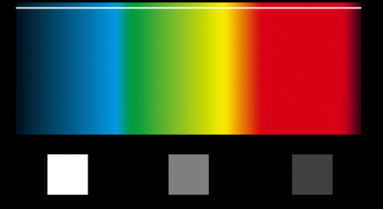
Reflectance curve
Graphs that depict how much light of different wavelengths is reflected by a surface.
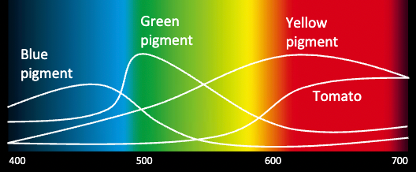
Selective transmission
The process through which certain wavelengths of light pass through an object, absorbing all parts of the spectrum.
not bouncing off and hitting your eye

Subtractive color mixing
A method of color mixing where pigments absorb (subtract) certain wavelengths of light, resulting in combined colors.
Each components is subtracting out the spectrum of light but is leaving behind the little bit that isn’t being taken away
Mixing colors together ; paints
End up with black

Additive color mixing
A process where colors are created by mixing lights together, resulting in a lighter / white mixture.
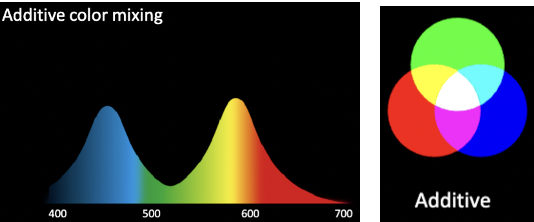
How do we distinguish colors?
Through the dimensions of color;
Hue,
Saturation,
and Lightness / Value

Hue
The attribute of color that allows us to differentiate one color from another,
such as green from blue.
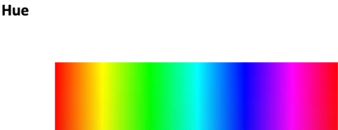
Saturation
The intensity or purity of a color, describing how vivid or dull the color appears.
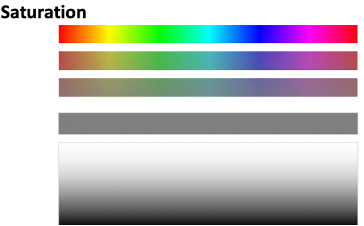
Lightness (value)
The perceived brightness of a color, influenced by the addition or subtraction of grey shades.
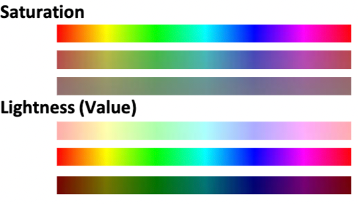
Trichromatic theory of color
The theory that color perception is based on the combination of three independent, primary colors:
red, green, and blue
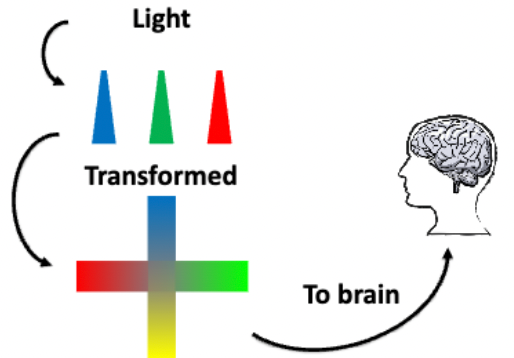
Young-Helmholtz theory of color vision
A color vision theory suggesting that one cone on its own can’t tell you anything about what color you’re perceiving;
→ you need three different types of cones that vary in brightness that correspond to red, green, and blue light.
Refers to the wavelengths of lights
Color matching studies
example: Give someone a reference color and then give them control over different colors of lights and they try to recreate the standard color you gave them with adjusting the lights
If you give them three colors then they could match any color, compared to if you gave them two or more than three, they wouldn’t be able to recreate a color
S-cones
Photoreceptors sensitive to short wavelengths of light, primarily blue.
M-cones
Photoreceptors sensitive to medium wavelengths of light, primarily green/yellow.
L-cones
Photoreceptors sensitive to long wavelengths of light, primarily yellow/red.
example: Perception: When cones are hitting at the yellow, there is an equal firing response from L and M cones because it is hitting the same level of sensitivity
Metamers
Different wavelengths of light that are perceived as the same color due to the response of the cones.
Red, green, and blue are metamers of white
Color deficiencies
= total / partial color blindness
A condition from birth where individuals perceive colors differently than normal because of the genetic absence or malfunction of one or more types of cone receptors.
Monochromatism
= color blindness
A form of color blindness where an individual can only see shades of gray / darkness because they only have rods and no cones at all.
Can’t distinguish color from any other color
Very rare
Can make out shapes but everything would be very blurry
Very sensitive
Poor acuity / clearness
Dichromacy
A color vision deficiency when having only two color receptors instead of three.
can be any of these they are missing:
Protanopia
Deuteranopia
Tritanopia
Protanopia
impairment of the L cones
Deuteranopia
Missing M cones
Tritanopia
Missing S cones
Unilateral dichromats
Individuals who have dichromacy only in one eye while the other eye has normal color vision.
Normal trichromatic (three cones) in one eye and the other eye has dichromacy (only two cones)
Ishihara plates
A set of color vision tests used to diagnose red-green color deficiencies.
Anomalous trichromats
Individuals who have three types of cones, but the sensitivity of one cone has shifted, overlapping with another; causing color vision anomalies / abnormalities.
Sex-linked conditions
Genetic traits that are located on the X chromosome, often affecting males more severely.
Genetic females could still have normal vision since they have one normal X chromosome even if the other X is infected.
Females could only really get it if they inherit both X chromosomes being infected
Males are more likely to get it because they only have one X chromosome so if they inherit it they will definitely have it while females are 50/50
Color afterimages
Showing the opposites of the colors you’re going to see because the opposite of that color is what is still lingering
Opponent process theory
A theory that suggests color perception isn’t made up of the three colors; its made up of colors that oppose each other
Dimensions of opposing colors combine to form our color perception
such as red versus green and blue versus yellow.
Hue cancellation studies
A method where one color is used to counteract another, demonstrating the opponent process of color perception.
Added yellow light to try and cancel out the blue color
Can cancel out yellow with blue – vice versa
Can cancel out red with green – vice versa
Opposites don’t exactly match up with green and red
Red is the opposite of a light blue and green is opposite of a magenta
Different “theories” of color
Turns the trichromatic three cones (independent of each other) into the opponent process (blue vs yellow) which is what is then sent to your brain
How much yellow is there vs blue is what is sent to the brain
Impossible colors
Some combinations that are just not physically possible in the real world because of the way the cones overlap and interact with each other
True cyan: S and M cones, with no L
Whenever you see cyan in the real world; the color is being desaturated / washed out some
How do you go from trichromatic to colors vs other color?
Has to do with;
receptive fields,
center surround fields,
single opponent fields, and
double opponent fields
Receptive fields determine what?
= they determine acuity
separate receptor fields in parts of body that have good acuity like in the fingers but in body parts with less acuity like the arm the receptive fields are much bigger and overlap a lot
= Combining their information together that leads to one signal
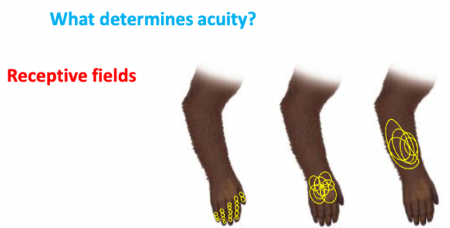
Center surround fields
Have one kind of connection in the middle and a different on the outside
Inhibitory on outside
Excitatory on inside
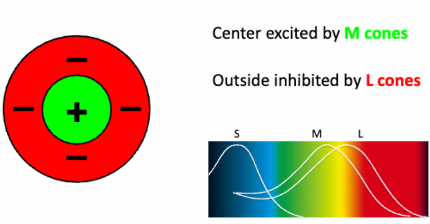
Single opponent fields
respond to colors of broad / large areas
Still has excitatory and inhibitory sections but on top of that, the signals are excited by different color factors
Center is excited by M cones (green)
Outside is excited by L cones (red)
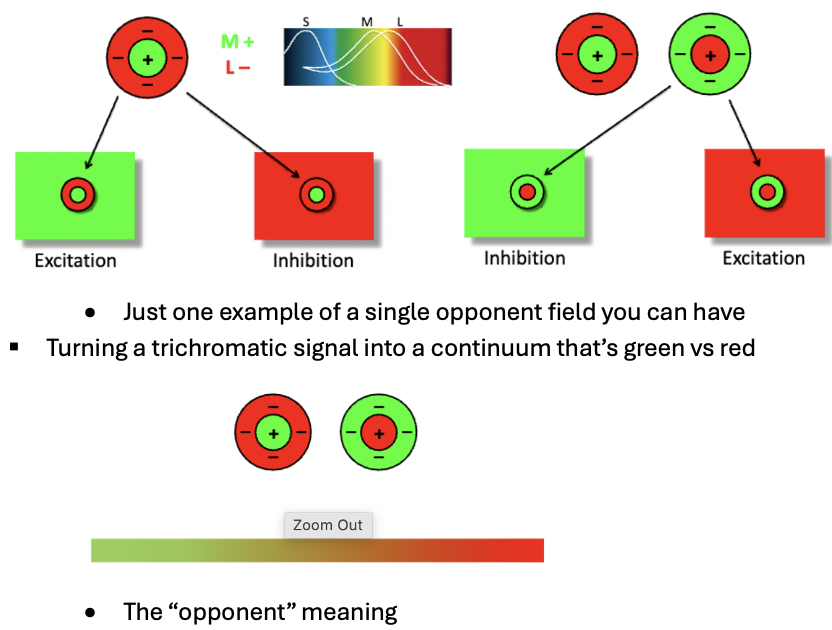
Double opponent fields
respond to color patterns, textures, and color boundaries, and detecting edges.
It would lead to no response at all because the signal from the one side is going to be completely signaled out by the color from the other side
Would get an inhibitory response if the red is against the green since the M is – in the red block so it would fire negatively
Would get an excitatory response if there is a boundary between the two colors; red and green
Responds strongly to the boundary between two colors
Does not respond to solid colors
example: The boundary is being detected by our double opponent field which is why the white inside looks more orange than the white outside since it is lined with a boundary of orange vs purple

Color constancy
The ability of the visual system to still recognize and detect the color itself, despite changes in environment or to it like the color of the light above
in example picture, can still tell that the color is red when there is a blue or green shade overtop of it but the red is actually a very dramatic change from the original red
We are compensating for the color of the lighting that we see in the picture
Mind is trying to compensate by subtracting out the blue light that is covering it which leads you to the original color; being red or yellow
Your mind perceives it as yellow even though it is actually a greyish
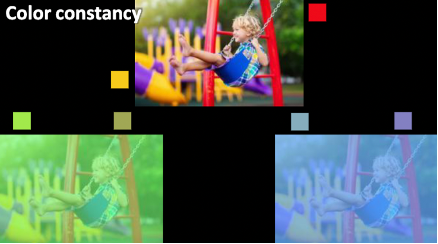
Chromatic adaptation
Similar to the ‘color after effect’ where ; you’re adapting to a color after looking at it for a while, and then after your receptors just don’t react as strongly as they did
Can also partly explain what’s happening in the images covered by a different color light
Real world situation: under different shades of white light in a room or during “golden hour” from the sunset or sunrise outside
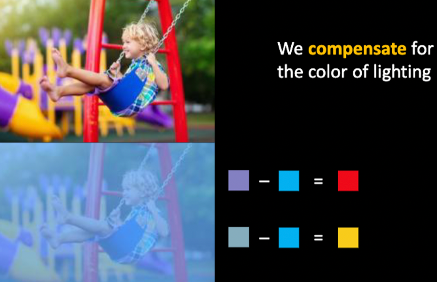
Lightness constancy
accurately being able to detect the lightness of an object despite the brightness of light that is hitting it is changing
Black absorbs most of the light but not all of it
White reflects most light
Reflectance
amount of light being reflected by white vs black
Illumination
how much light is hitting the object in the first place
The factors of light (sun outside vs lights in a room) changes the amount of light being reflected off and is hitting your eye
Sun is much brighter than the lights in a room
(image)
The amount of light reflecting off of black when its being hit from the sun can be a lot higher units than the amount of white units that are bouncing off a white object when in dimmer, inside lighting
Depends on the amount of light hitting it
Ratio principal
lightness perception is based on the ratio between an objects light intensity and the light intensity of its surroundings
(image) ‘A’ and ‘B’ are actually the same color but they don’t look like the same color because of its surroundings and our mind making ‘B’ look lighter than it actually is since we see there is supposed to be a shadow over it
Reflectance edge
A boundary / edge caused by a change in the reflectance properties / change in actual color of object
that creates a visual contrast between two areas due to differing reflectance levels.
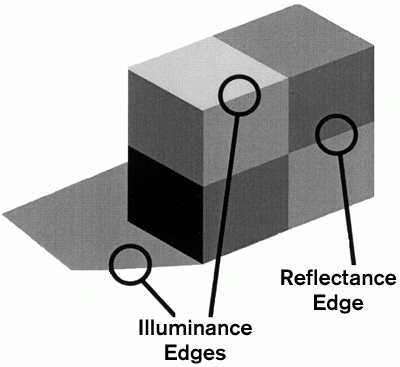
Illumination edge
a visual boundary where the amount of light (or illumination) changes abruptly.
A boundary / edge created in a scene where difference in brightness is caused by illumination ; objects color are both the same but more light is hitting one, making it look brighter or darker
Dress example: The reason people can see it different ways is because of color constancy
When seeing blue and black; mind is compensating by subtracting out the bright yellow light from the background
When seeing yellow and white; mind is seeing it being under a shadow so you’re compensating and brightening the colors up
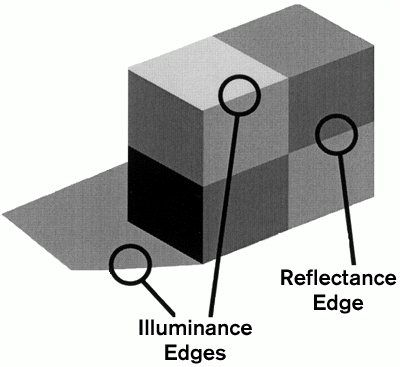
Identifying shadows
Penumbra: The fuzzy border around shadows edge
Meaningful shape:
Orientation of the surface: What direction is the surface pointing
Ponzo illusion
An optical illusion with objects along converging lines; when something is farther away it looks bigger to you
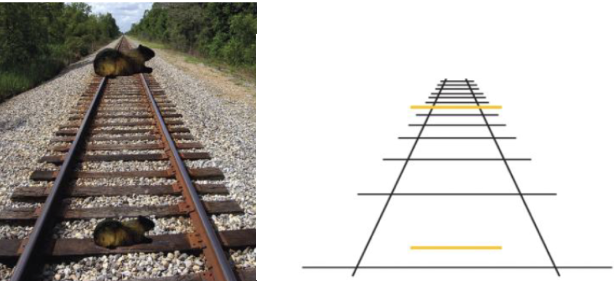
Shepard illusion
An optical illusion that tricks / compensates for your depth perception, making two objects appear to be different sizes even when they're the same.
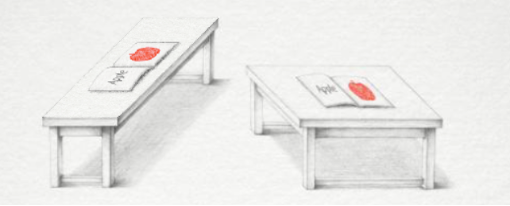
Muller-Lyer illusion
An optical illusion where length perception is affected by arrow shapes at the ends of lines pointing inwards or outwards;
perceive the line where its pointing outwards as longer compared to the line with arrows facing inward when they’re actually the same size
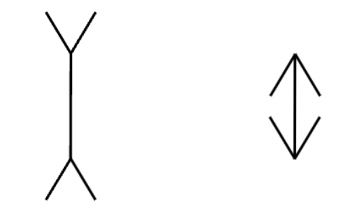
Conflicting cues theory
because one object is bigger overall then we are using that as an extra piece of information to judge how big the line is
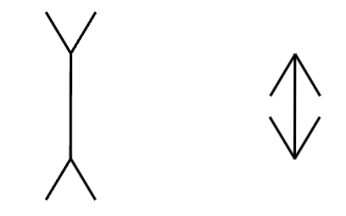
Ames room
gets rid of any depth information that tells you that one side of the room is closer to you than the other.
Tricks you into thinking two things are the same distance from you, making you think one is much bigger
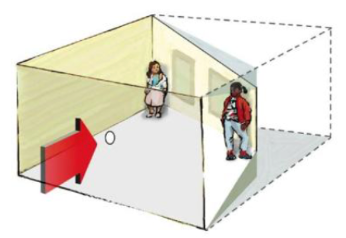
Familiar size development
When babies learn to develop familiar size cues
Played with toys of different sizes
5 months they don’t show the effect, just as likely to grab for either one
Couple months ~7 months later they learned how to use the distinction of familiar size and grabbed the bigger one first, thinking it was closer to them
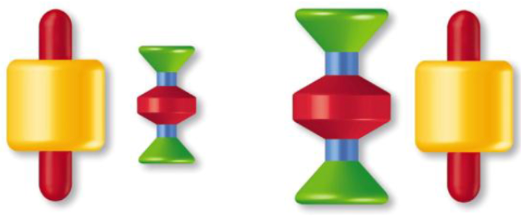
Shadow development
Same age range of when they learned how to take advantage of the shadow information, thinking the one with deeper shadows was closer to them
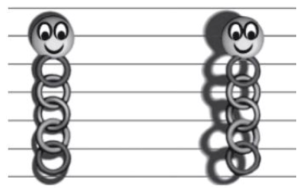
Cutaneous senses
= skin senses
Completely different types of signals that pick up different types of information
The senses responsible for the perception of;
Pressure
Vibration
Pain signals
Temperature
Itching
Proprioception
Knowledge of where your body is in space
Cutaneous perception
Made up of sensory information that you can get from your skin and your body
Mechanoreceptors
receptors in the skin that respond to mechanical information
Can involve pressure, movement, vibration, and stretching
(physical force & motion on your skin)
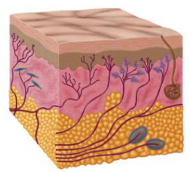
Slowly adapting receptors (SA)
Receptors that continue to respond to a stimulus as long as it is present.
(respond to pressure stimuli)
Example: Something is pressing on you for a second and then it goes away
These receptors are going to start firing when the pressure starts and then keeps firing the whole time something is touching you
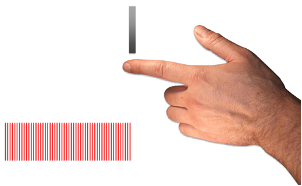
Rapidly adapting receptors (RA)
Receptors that respond quickly to changes in stimulus but adapt to constant stimuli.
(responds to changes in pressure stimuli)
Start firing as soon as contact starts but almost instantly stops firing and then starts firing again when the pressure stops
Get used to the stimulus really quickly and fires again when there is another change in pressure / when the stimulus is taken away
Has squishy stuff around it: (image)
Example of hand in a water balloon, you’d feel if someone’s hand was pressing down on the balloon and then wouldn’t feel it if they kept their hand there but then once they took their hand off you’d feel it and the water would move around
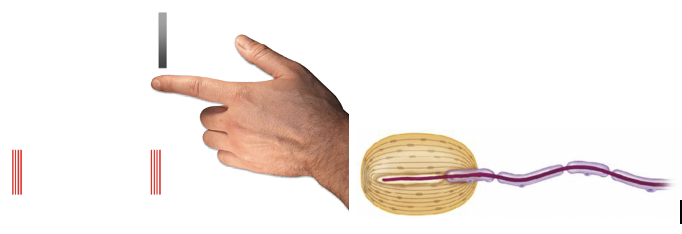
What are the two senses near the surface of the skin?
Merkel receptors (SA1) = slowly adapting receptors 1
Good at picking up fine detail
Meissner corpuscles (RA1) = rapidly adapting receptors 1
Important at detecting motion on your skin
Useful at adjusting hand grips because pf the change
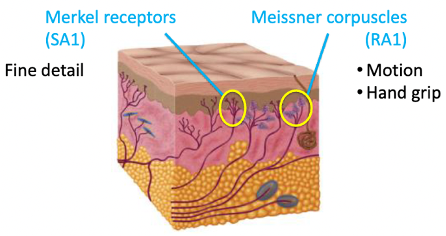
What are the two senses deeper down in the skin?
Ruffini Cylinders (SA2) = slowly adapting 2
Good for detecting stretching in your skin
Pacinian corpuscles (RA2 / PC) = rapidly adapting 2
Important for detecting vibration / a pressure that is coming and going quickly
Detect fine texture
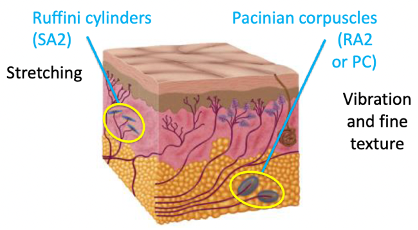
Homunculus
= little man / map of human body inside of your head
The way it is like the body is that the responding areas are mapped out in the same order for the most part
But.. there are a few body parts in the cortex that are out of order
The size of each area is also not correlated to the bigger body parts
in the; Primary somatosensory cortex / receiving area / S1
Soma = body, so = body senses
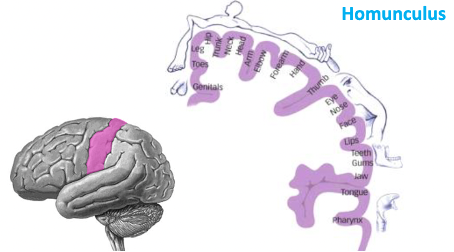
Cortical magnification
The phenomenon where certain body parts have a disproportionately large area dedicated to processing sensory information in the brain.
The reason the body parts like hands have bigger areas in the brain than say the leg is because you have better perception in those parts of your body
Experience-dependent plasticity
The brain's ability to change and adapt based on individual experiences, particularly in sensory processing.
Example: Monkeys trained for 3 months on task involving index finger
Results showed that there was a change in how much of the brain is designated to a certain body part just from their experience
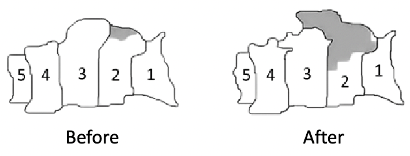
Tactile acuity
The level of small detail that you can pick up and be perceived through touch, which varies between different body parts.
Grating acuity
A way to measure tactile acuity
example: A measure of spatial resolution based on the participant’s ability to identify the orientation of lines.
the participant would tell you if the lines of the grating were horizontal or vertical
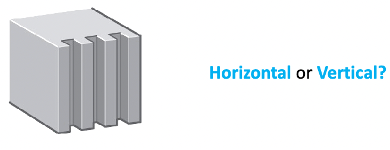
Two-point threshold
A measure of tactile acuity that indicates the smallest distance between two points that can be perceived as separate.
measuring with an “aesthesiometer” where you can adjust the two points where it ends up feeling like one point instead of 2 and can measure how close or far apart it has to be to still be able to tell its 2 points
Have really small two point threshold for fingers but compared to the arm the threshold number is much higher so it’s harder to detect if its two or one points
This relies on the Merkel receptors (SA1) because of the amount of these receptors in a certain space
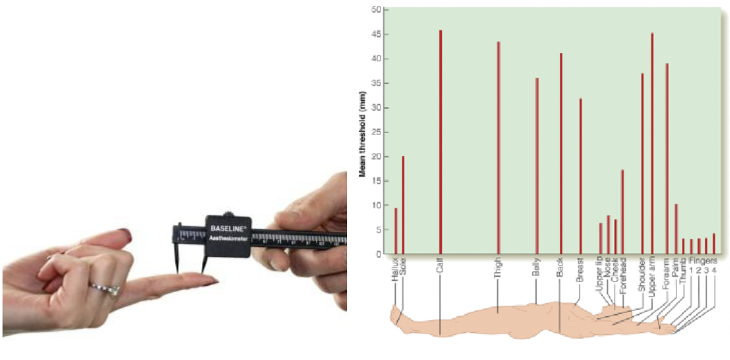
Merkel receptors (SA1)
Slowly adapting mechanoreceptors that provide detailed information about texture and fine touch.
is what makes each body part and persons two point threshold a little different because of the amount of these receptors in a certain space
These receptors are more spaced out in the arm then they are in the fingertip
Pinky and index finger have same number of Merkel receptors but your index finger has better acuity than the pinky because of the experience and use – like how it was in the monkey tactile acuity study
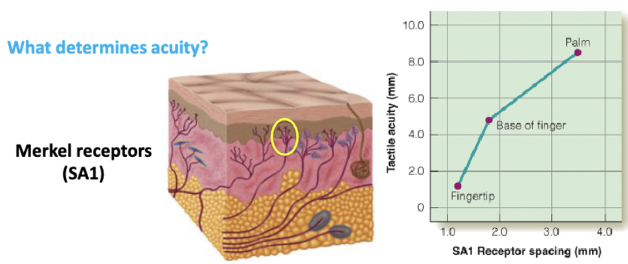
Texture senses
= detecting repeating patterns of fine details
Ruffini cylinders (SA2)
Pacinian corpuscles (RA2 or PC)
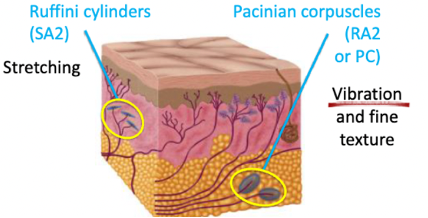
Pacinian corpuscles
Rapidly adapting mechanoreceptors that are good at picking up fine textures because they can detect vibrations
example: when pressing down on fine parts of sandpaper, people couldn’t tell the difference in fine textures just by applying pressure
But could tell the difference with movement
This is because it is able to be transmitted through vibrations
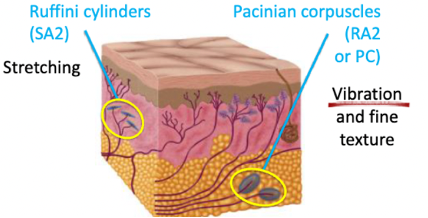
Spatial cues
texture features that are large enough to detect with stationary pressure
Temporal cues
smaller texture features that are detected through movement
Texture perception example study
turning off people’s ability to detect vibrations to see if they were still having the same results of telling the differences between different grids of sandpapers.
When exposing them to 6 minutes of 250 Hz of vibration the PC cells adapted because they were overwhelmed which caused them to not be able to feel the vibrations anymore and not be able to tell the difference between the sandpapers
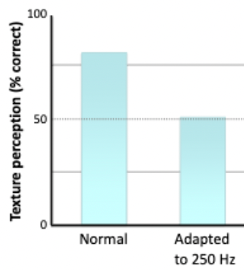
Haptic perception
perception based on exploring objects in the world through touch.
Involves multiple systems:
Somatosensory system
Motor system
Cognitive system
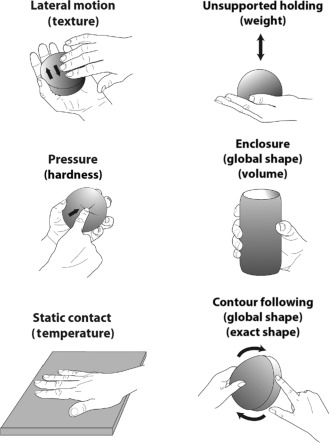
Motor system
moving around to be able to feel different parts of the object to get the information you need
Cognitive system
doing trial and error, feeling different parts of the object, and coming up with ideas of what it could be
Exploratory procedures
Methods used to explore objects via touch to gain information about their characteristics.
lateral motion
pressure
enclosure
contour following
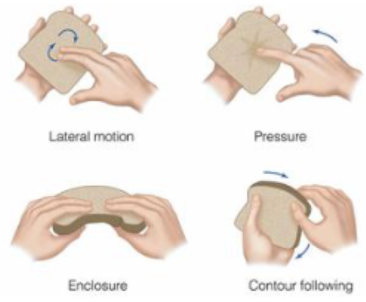
Lateral motion
Moving fingers across a surface to get tactile information about texture.
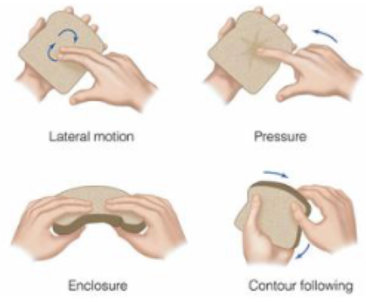
Pressure
Tells you about the density of object
(hard like rock or soft like sponge)
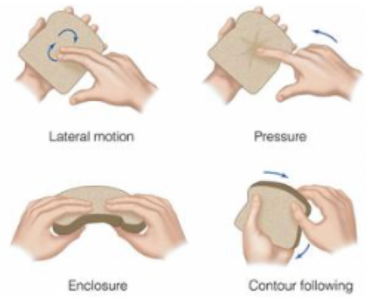
Contour following
The tactile exploration method used to identify the shape of an object by tracing its outline.
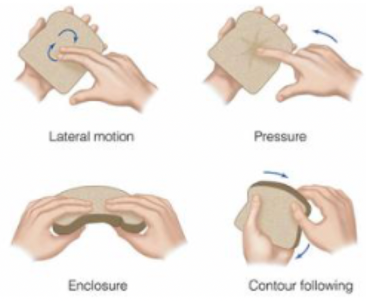
Inverse projection problem
makes depth perception harder
Makes a 2D picture on your retina
Information you have on your eye is incomplete / ambiguous; can interpret it in any way
Hollow mask illusion: mask looks like it is sticking out on the hollow side, fooling your mind
No single solution
We rely on many different sources of information at once
Oculomotor cues
Cues that make use of the information using the muscles in your eyes
Paying attention to the tension in your eyes and using that to know how far or close something is
Can put strain on your eyes which helps you detect how close or far an object is
Convergence
How your eyes aren’t always looking straight ahead; they’re focused inwards a little; so both can be looking at the same thing
The closer the object moves to you, the more your eyes turn in
Accomodation
When something goes out of your eye it goes out of focus so you have to squeeze the lens to focus;
making you tense up those eye muscles which you can detect
Monocular cues
can tell the depth even if you’re looking at it with one eye
Pictorial cues - relative size
the farther away an object is from you, the smaller it is
Pictorial cues - relative height
lower on the visual field = closer, higher up = farther away
for things that are above the horizon
the closer it is to the horizon, the farther away it is / farther from the horizon = closer to you & bigger in your vision
Pictorial cues - Occlusion
“occluding your view” / “blocking your view” when something is covering something else, it is closer to you than what its blocking
Pictorial cues - Perspective convergence
parallel lines come together as distance increases; they meet at the —>
vanishing point = where all converging parallel lines come together at
Pictorial cues - familiar size
using knowledge of how big things actually are to figure out how far away they are.
example: if a basketball and golf ball are both technically the same size on your visual field, then the golf ball is closer because it is much smaller than the basketball
Pictorial cues - texture gradient
elements of patterns get smaller and more densely packed as they get farther.
works on a big scale
Pictorial cues - atmospheric perspective
as stuff gets farther from you it looks hazier and lighter
from particles in the air and atmosphere
works on a big scale
Pictorial cues - shadows
changes your perception of where the object is moving or is placed in space
What uses all the Pictorial cues?
The Renaissance pictures use all of the Pictorial cues.
and uses them really well;
making it look more realistic